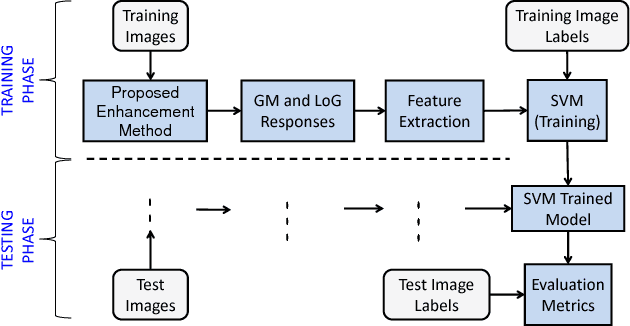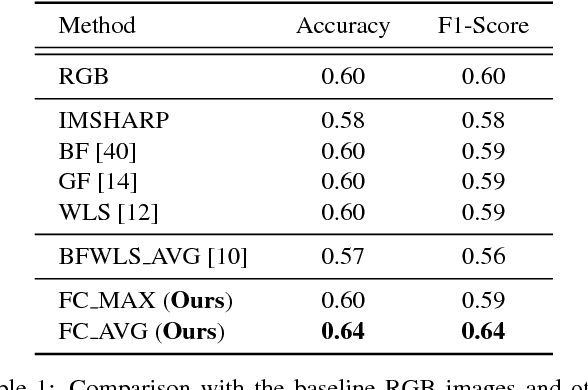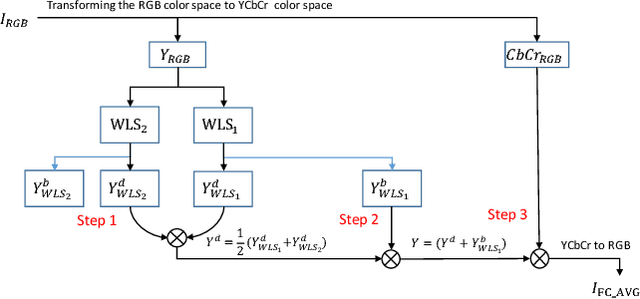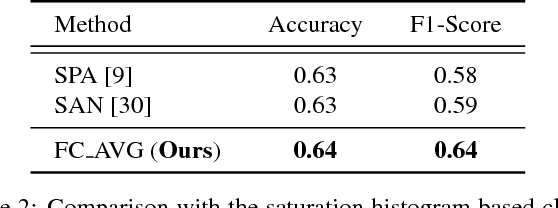Ole Jacob Elle
Can Image Enhancement be Beneficial to Find Smoke Images in Laparoscopic Surgery?
Dec 27, 2018



Abstract:Laparoscopic surgery has a limited field of view. Laser ablation in a laproscopic surgery causes smoke, which inevitably influences the surgeon's visibility. Therefore, it is of vital importance to remove the smoke, such that a clear visualization is possible. In order to employ a desmoking technique, one needs to know beforehand if the image contains smoke or not, to this date, there exists no accurate method that could classify the smoke/non-smoke images completely. In this work, we propose a new enhancement method which enhances the informative details in the RGB images for discrimination of smoke/non-smoke images. Our proposed method utilizes weighted least squares optimization framework~(WLS). For feature extraction, we use statistical features based on bivariate histogram distribution of gradient magnitude~(GM) and Laplacian of Gaussian~(LoG). We then train a SVM classifier with binary smoke/non-smoke classification task. We demonstrate the effectiveness of our method on Cholec80 dataset. Experiments using our proposed enhancement method show promising results with improvements of 4\% in accuracy and 4\% in F1-Score over the baseline performance of RGB images. In addition, our approach improves over the saturation histogram based classification methodologies Saturation Analysis~(SAN) and Saturation Peak Analysis~(SPA) by 1/5\% and 1/6\% in accuracy/F1-Score metrics.
A Smoke Removal Method for Laparoscopic Images
Mar 22, 2018



Abstract:In laparoscopic surgery, image quality can be severely degraded by surgical smoke, which not only introduces error for the image processing (used in image guided surgery), but also reduces the visibility of the surgeons. In this paper, we propose to enhance the laparoscopic images by decomposing them into unwanted smoke part and enhanced part using a variational approach. The proposed method relies on the observation that smoke has low contrast and low inter-channel differences. A cost function is defined based on this prior knowledge and is solved using an augmented Lagrangian method. The obtained unwanted smoke component is then subtracted from the original degraded image, resulting in the enhanced image. The obtained quantitative scores in terms of FADE, JNBM and RE metrics show that our proposed method performs rather well. Furthermore, the qualitative visual inspection of the results show that it removes smoke effectively from the laparoscopic images.
 Add to Chrome
Add to Chrome Add to Firefox
Add to Firefox Add to Edge
Add to Edge